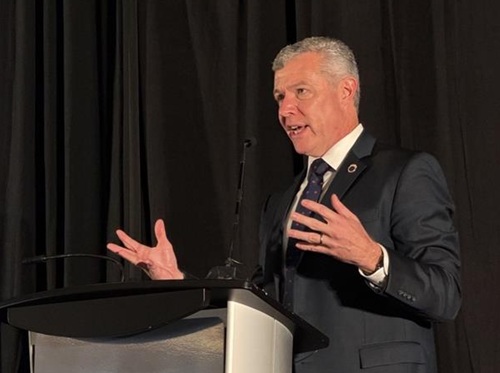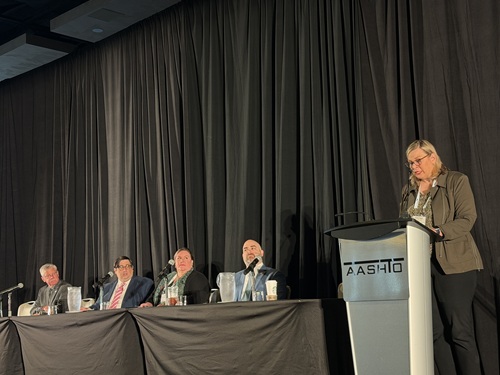U.S. Department of Transportation Secretary Elaine Chao (seen above) said her agency is launching a new rural infrastructure-focused initiative during a speech at the 2019 American Association of State Highway and Transportation Officials annual meeting in St. Louis – an effort that will be buttressed by the creation the Rural Transportation Council that will officially come into being by the end of this week.
Called the R.O.U.T.E.S. Initiative, which is short for “Rural Opportunities to Use Transportation for Economic Success,” it will be focused on addressing the “disparities” in rural transportation infrastructure in order to “tangibly improve safety and economic competitiveness” in all parts of the country.
“This new initiative will ensure that rural infrastructure is given full consideration in all the U.S. Department of Transportation discretionary grant programs,” Sec. Chao said.

“We will bring together leaders and staff in key infrastructure modes – highways, aviation, transit, and railroads – to examine grant programs’ potential to better support the nation’s critical rural transportation infrastructure,” she added.
In effect, the R.O.U.T.E.S. Initiative will act as a magnifying lens, prioritizing rural infrastructure projects that apply for discretionary grants.
“Rural America is not looking for a handout; it just wants fairness and equity in the distribution of funds,” Sec. Chao explained in her remarks, referencing a variety of statistics to highlight the transportation needs of the nation’s rural communities:
- While 19 percent of the nation’s population lives in rural areas, 46 percent of the nation’s highway fatalities occur on rural roads.
- The overall motor vehicle fatality rate on rural roads is twice that of urban roads.
- Nearly half of all truck vehicle miles traveled occur on rural roads, with two-thirds of rail freight originating in rural areas.
- About 80 percent of America’s poor-condition bridges are located in rural areas.
- Some 44 percent of rural vehicle miles are generated by urban residents traveling to destinations outside of their home metro areas.
“All of this calls for a sharper focus in rural areas to meet national transportation needs,” Chao added. “That’s why this program will assure rural infrastructure is given full consideration.”

She pointed out that the new council being formed within USDOT will serve as a “helpful centralizing point” to execute this new rural infrastructure-focused effort.
“Later this week, I will sign the order setting up a new Rural Transportation Council to execute and manage the R.O.U.T.E.S. initiative and to involve stakeholders, starting with state DOTs, local governments, and national organizations,” Sec. Chao said.
“The objective is to improve analysis of rural projects that apply to receive USDOT discretionary grants,” she noted. “It will also serve as a helpful, centralized point of information for transportation officials and project sponsors serving rural areas. And will be helpful in accessing and navigating programs and resources across the modal agencies.”

She added that “we are as intent as ever focused on improving the transportation system throughout the whole country, but we are not into command and control, top-down directives; that’s because we believe in you as leaders embedded in your communities. We want to help you build, modernize, and maintain the infrastructure that you think best suits the needs of your states.”
Sec. Chao pointed out that state DOTs “know that the power of transportation is huge” in terms of transforming the quality of life for all American citizens.
“Transportation has an enduring impact on society – so bit by bit, project by project, mile by mile, we are laying the groundwork for a better future and strong America for all our people,” she said.
 Top Stories
Top Stories
Collaboration Touted at AASHTO’s Third Safety Summit
October 31, 2025 Top Stories
Top Stories

